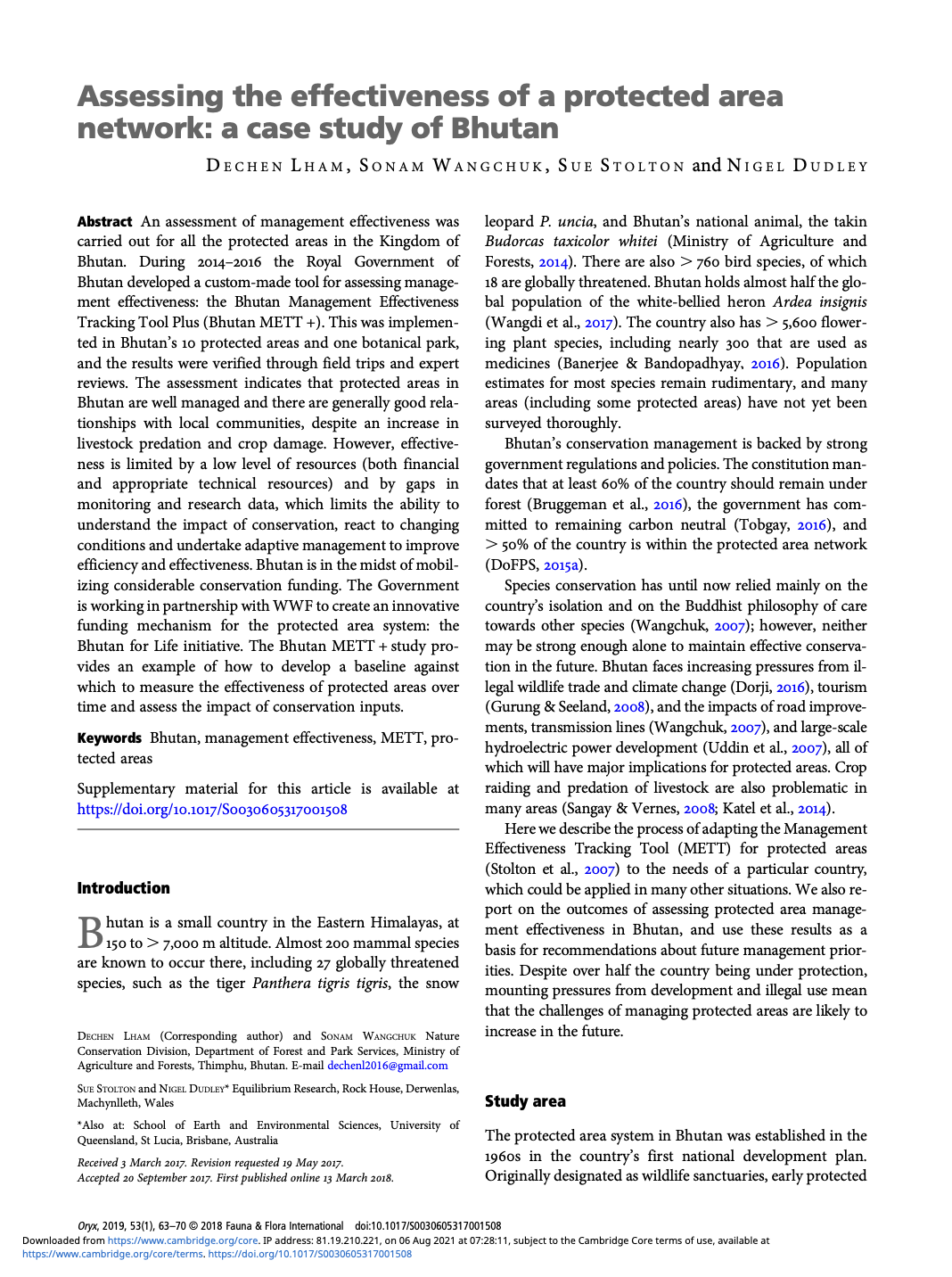Resource information
An assessment of management effectiveness was carried out for all the protected areas in the Kingdom of Bhutan. During 2014-2016 the Royal Government of Bhutan developed a custom-made tool for assessing management effectiveness: the Bhutan Management Effectiveness Tracking Tool Plus (Bhutan METT +). This was implemented in Bhutan’s 10 protected areas and one botanical park, and the results were verified through field trips and expert reviews. The assessment indicates that protected areas in Bhutan are well managed and there are generally good relationships with local communities, despite an increase in livestock predation and crop damage. However, effectiveness is limited by a low level of resources (both financial and appropriate technical resources) and by gaps in monitoring and research data, which limits the ability to understand the impact of conservation, react to changing conditions and undertake adaptive management to improve efficiency and effectiveness. Bhutan is in the midst of mobilizing considerable conservation funding. The Government is working in partnership with WWF to create an innovative funding mechanism for the protected area system: the Bhutan for Life initiative. The Bhutan METT + study provides an example of how to develop a baseline against which to measure the effectiveness of protected areas over time and assess the impact of conservation inputs.

